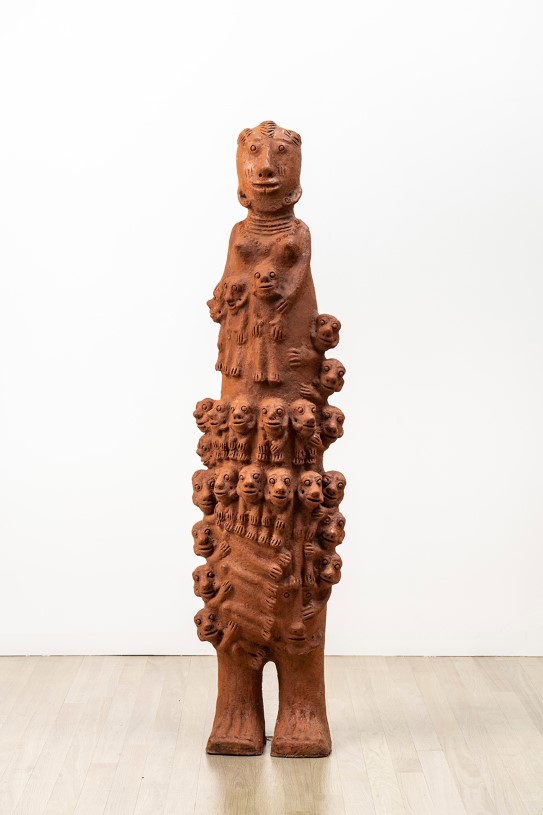Louise Bourgeois & Seni Awa Camara

Transcription
Elin-Therese Aarseth
Louise Bourgeois and Seni Awa Camara took part in the now famous exhibition Magiciens de la Terre in Paris in 1989.
In the exhibition, art by non-Western artists was shown side by side with Western ones. And at the time, such an approach was considered ground-breaking.
Narrator
This is Elin-Therese Aarseth, art historian at the National Museum.
Elin-Therese Aarseth
Camara had developed a sculptural repertoire using terracotta. She was inspired by local pottery traditions, and she made monumental figures. The works she made in the 1980s, two of which were shown at the Magiciens exhibition, often contain a mass of small monster-like forms clinging to the body of a pregnant woman.
These were of course aspects of the female body that were also central to Bourgeois' work. The repetitive, projecting shapes that we see in Camara's figures can remind you of some of Bourgeois' latex work, where you will also find these similar shapes.
Narrator
Also relevant to Bourgeois' interest in Camara's artistry was perhaps the book on African adobe architecture that her son Jean-Louis Bourgeois published shortly after the Magiciens exhibition in 1989.
Elin-Therese Aarseth
In retrospect, it becomes clear that this year, with the fall of the Berlin Wall and the end of the Cold war, marks a geopolitical turning point.
This year is also important in Bourgeois' artistic development, not only because of the large Cell works she created at this time, but also because she participated in a number of exhibitions where she was presented as a central point of reference.
She represented a more alternative and more global oriented art that was emerging at the time.